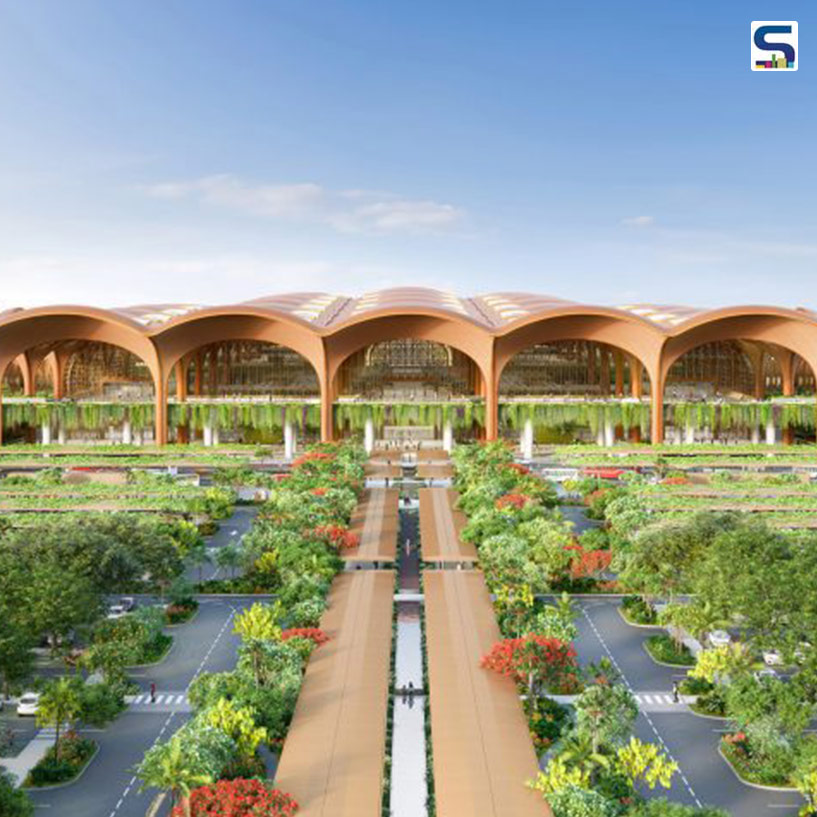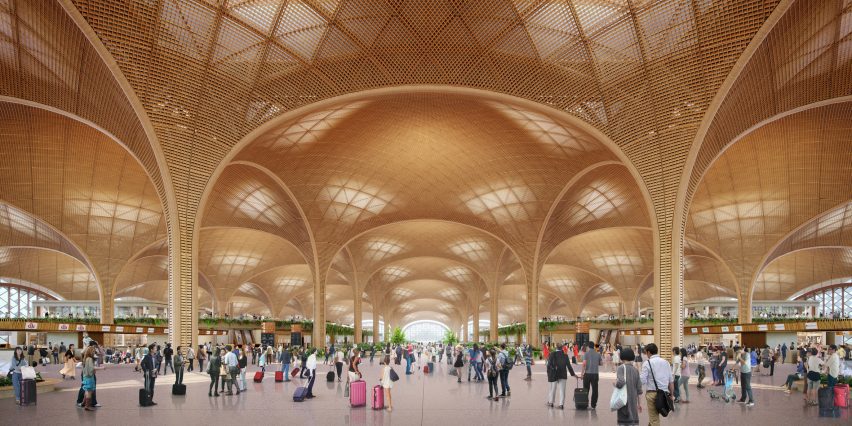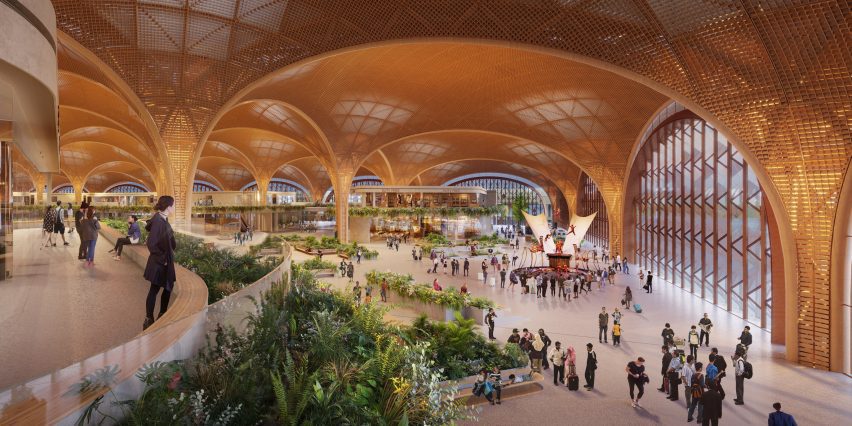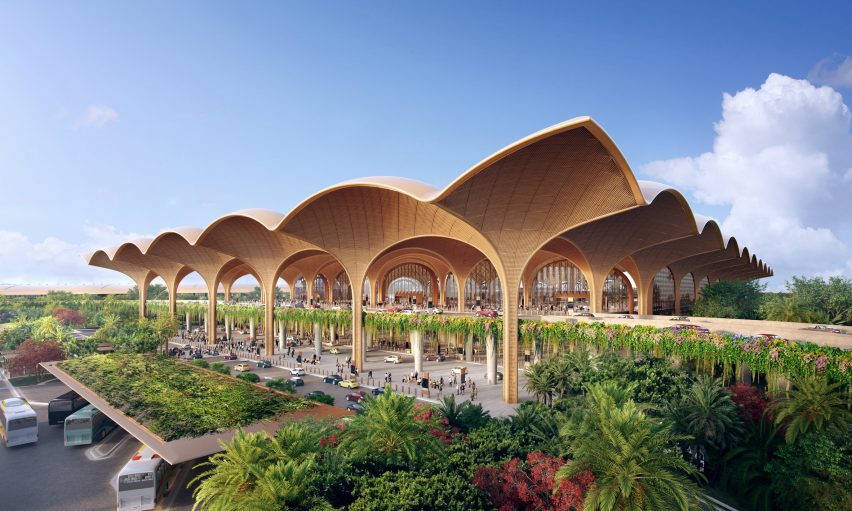
Foster + Partners, a British design firm, has shown the plans for Techo International Airport in Phnom Penh, Cambodia. The construction has started about 20 kilometers south of the city center. Inspired by local styles and the tropical weather, the design includes a new airport area and a terminal with a grid-shell roof that looks like a tree canopy. Read more details on SURFACES REPORTER (SR):
 Techo International Airport is expected to be a key part of Phnom Penh's growth as a major transportation hub between different regions. Stefan Behling, who leads the team at Foster + Partners, highlights that an airport is not just a place for travel. He says it's a really important public building because it symbolizes the entrance to a city and is crucial for the world's connected economy.
Techo International Airport is expected to be a key part of Phnom Penh's growth as a major transportation hub between different regions. Stefan Behling, who leads the team at Foster + Partners, highlights that an airport is not just a place for travel. He says it's a really important public building because it symbolizes the entrance to a city and is crucial for the world's connected economy.
Design Inspired by Cambodian Essence
Foster + Partners drew inspiration from Cambodia's rich history and tropical ambiance to craft a design that not only reflects the local vernacular but also positions Techo International Airport as a symbol of the nation's progress.
 The grid-shell roof, resembling a majestic tree canopy, pays homage to Cambodia's heritage.
The grid-shell roof, resembling a majestic tree canopy, pays homage to Cambodia's heritage.
Innovative Terminal Design
The terminal building, a central hub for passenger services, boasts a distinctive layout. Flanked by aerofoil-shaped wings for arrivals and departures, the structure is crowned by a single lightweight steel roof, a grid of interconnected "trees" spanning 36 meters each. The roof design ingeniously incorporates a filtering screen to capture natural light, creating an ethereal ambiance within the terminal.
Sustainable and Green Features
Foster + Partners prioritizes sustainability, utilizing onsite-generated photovoltaic energy. The integration of dense landscaping along the central spine softens the monumental grid-shell roof, creating a harmonious blend with the environment. The warm material palette nods to the region's natural, neutral-toned architecture.
Phases of Development
Currently under construction, Techo International Airport will be completed in a series of phases. The initial phase aims to accommodate 13 million passengers annually, with future plans to expand its capacity to 30 million. Limited level changes and visually permeable design elements ensure a human-scale experience.
 Beyond Cambodia, Foster + Partners has unveiled designs for a mixed-use development in Miami, reflecting local vernacular, and plans for a new urban center in Hangzhou, China.
Beyond Cambodia, Foster + Partners has unveiled designs for a mixed-use development in Miami, reflecting local vernacular, and plans for a new urban center in Hangzhou, China.
Photo Courtesy: Foster + Partners.